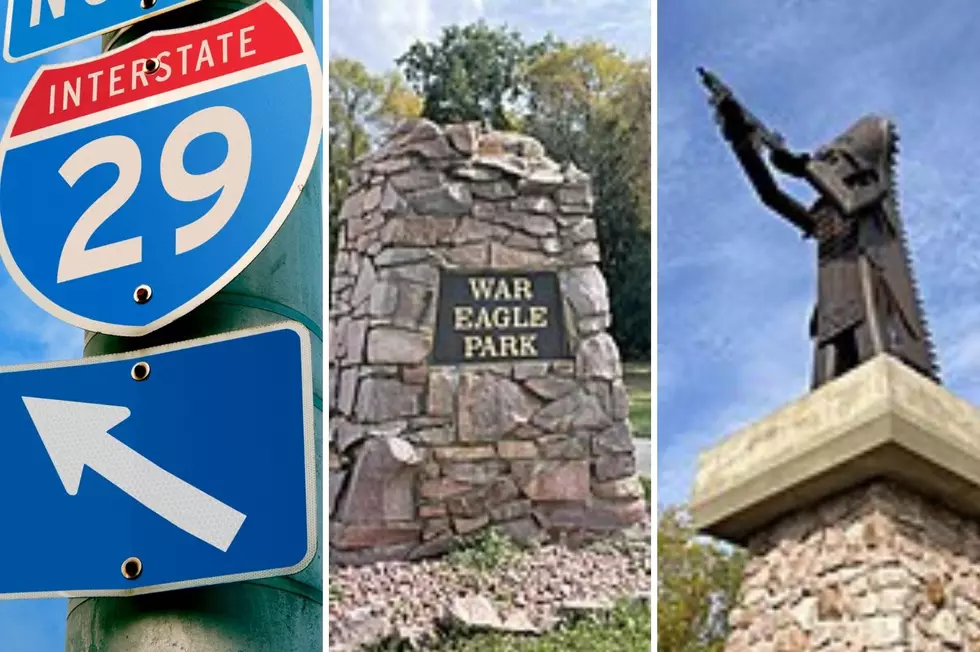
Exploring ‘War Eagle Monument’ Near the South Dakota, Iowa Border
Originally being from the Sioux City, Iowa area, I grew up knowing about the War Eagle Monument perched on a bluff along I-29. There was at least one field trip for every kid in the area to the monument.
However, speaking with folks from Sioux Falls, they didn't seem to know what I was talking about. All they know about I-29 in Sioux City was that it was usually under construction.

When crossing into Iowa from South Dakota on I-29, look up!
War Eagle Monument
See South Dakota's 'Dignity of Earth and Sky' Sculpture Up Close
TAKE A DEEP DIVE INTO SOUTH DAKOTA'S WALL DRUG
The War Eagle Monument is in honor of Wambdi Okicize or as he was more commonly known War Eagle.
According to the Sioux City History website, "While his Indian name means 'Little Eagle,' whites always referred to him as War Eagle, which is odd because all through his life War Eagle sought to keep peace. He even left his home tribe the Isanti (sometimes referred to as Santee) to avoid a battle as to who was to become chief."
War Eagle was a riverboat guide and pilot along the Mississippi, he worked for the American Fur Company delivering messages, and even carried messages for the government during the War of 1812.
War Eagle eventually married Mazakirawin in Minnesota where he was adopted into the Ihanktonwan or Yankton Sioux tribe. He and his wife had four daughters and three sons.
War Eagle was eventually elected Chief of his tribe and was one of many tribal leaders invited to Washington D.C. to meet with the President to negotiate peace treaties.
In 1837, War Eagle received a silver medal from President Martin Van Buren.
War Eagle had many connections with the white man through his trading and marriages. The commander of the Vermillion trading fort married one of War Eagle's cousins.
Two of War Eagles' daughters married Theophile Bruguier. Bruguier was the first white man to settle in what is now Sioux City. He had been accepted by the Yankton tribe, traveling with them for years.
Allegedly, Bruguier told War Eagle of a dream he had about a beautiful place where two rivers joined together. War Eagle said he knew the place. That place is where the Sioux and Missouri rivers meet.
Bruguier built a cabin with his two wives in 1849. This is believed to be the first settlement in Sioux City. They made a home there and traded with Indians.
War Eagle died in 1851 and was buried on a bluff overlooking the Missouri River Valley. Many members of War Eagle's family were also buried on this bluff.
The bluff and monument are now part of War Eagle Park in Sioux City, Iowa.
According to Wikipedia, The War Eagle Monument is made of steel and depicts War Eagle with an eagle feather bonnet and a ceremonial pipe. The monument is to honor his 'brave leadership and commitment to peace.'
The Sioux City History website sums up his legacy like this, "War Eagle is best remembered as a person who believed in peace and worked his whole life toward that goal. Because of his leadership among the tribes, the Indians and the whites learned to work together without having to resort to violence."
More From KXRB









